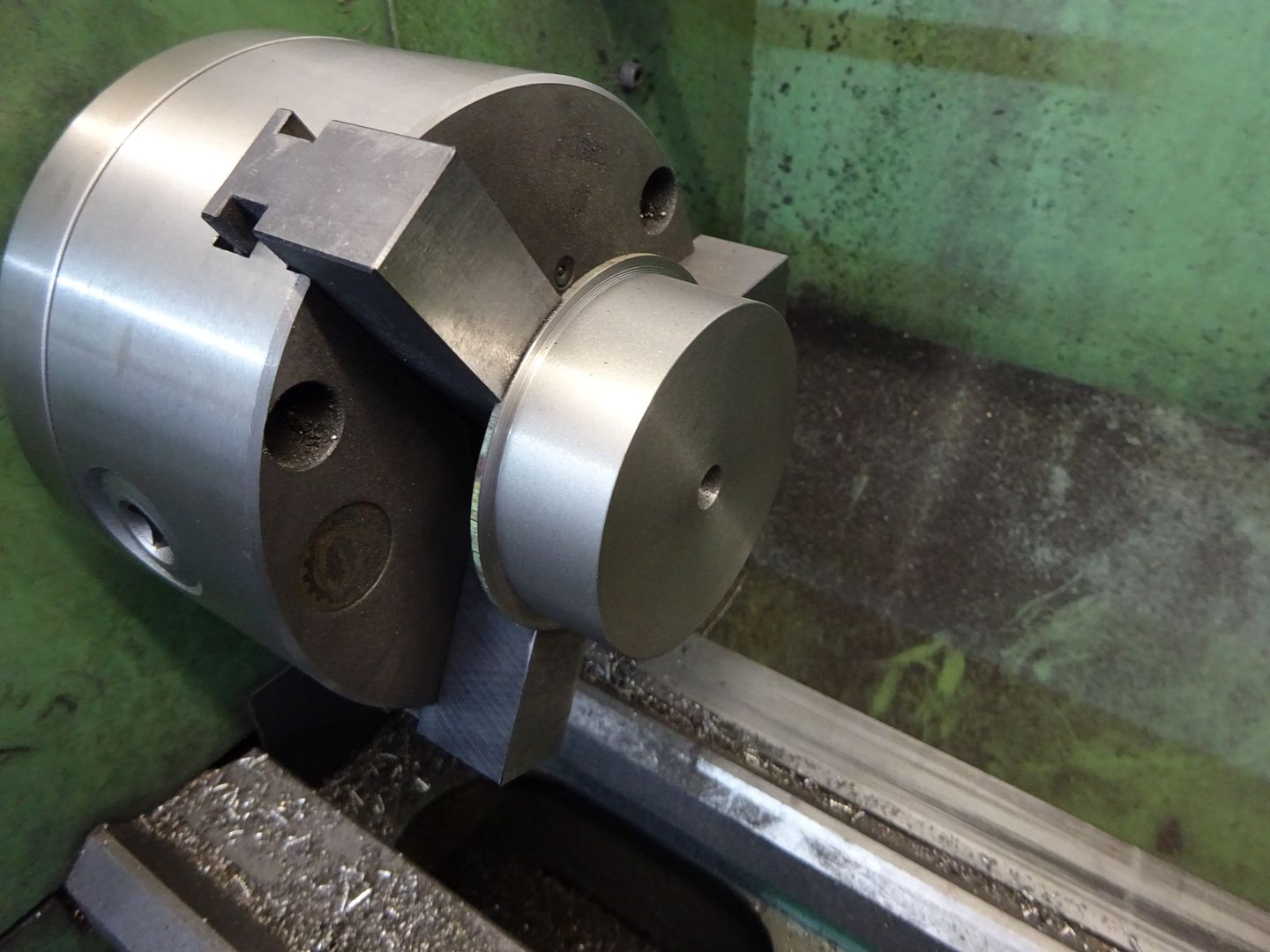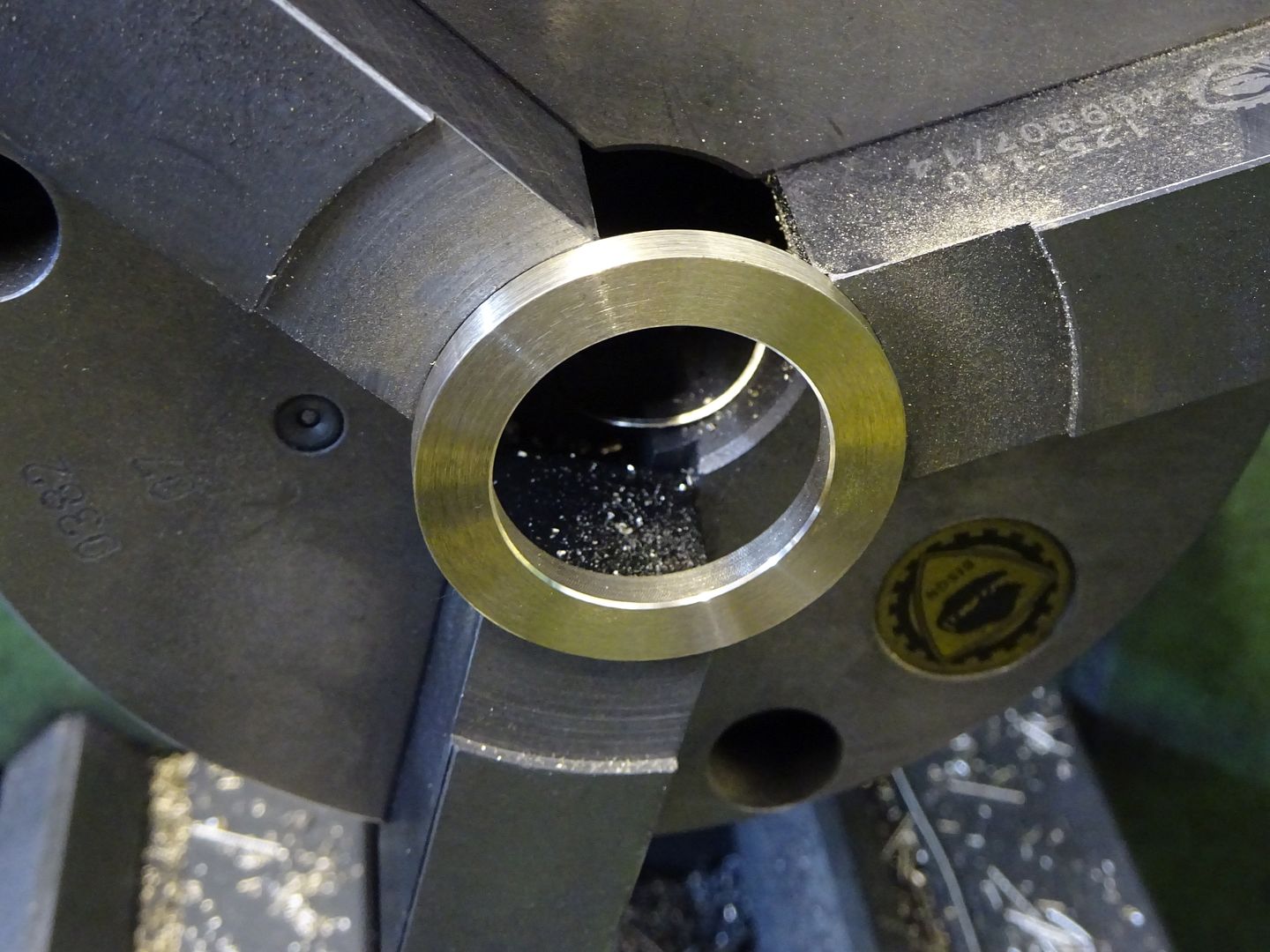Posted by Peter Cook 6 on 11/01/2022 22:41:51:
Posted by AdrianR on 10/01/2022 16:11:56.
…
…
I find it interesting that Andrew's numbers agree with SOD for 100mm (4" ) dia steel (100rpm), but the multipliers for brass (3 vs 1.5) and aluminium (6 vs 2) are so different. I will try cutting a bit faster in aluminium, but the Taig's minimum speed of 400+ rpm limits cutting pieces of steel to around 1" diameter.
MC's original issue was exacerbated by the interrupted cut (20 – 22 impacts/sec ) on a 100mm diameter. I suggested reversing the jaws and cutting the step close to the centre as if they were inside Jaws then only taking a final skim with them back as outside jaws.
…
Andrew and I both emphasise that the estimated RPM are guidelines. We agree Brass and Aluminium cut faster than steel, which is the important thing.
My rule of thumb gives an RPM that's in the right ball-park, but the actual sweet spot is determined by a combination of your tool's rigidity, power, torque, and speed range. It's necessary to experiment.
Andrew, who is a professional, knows each metal and alloy has a surface cutting speed that optimises removal rate, power consumption and finish. This is important in the cut-throat world of manufacturing where inefficient production methods are commercial suicide. But optimum cutting requires heavy, powerful machinery. The lighter gear owned by most amateurs can't cope, so the operator has to compromise. Makes sense for anyone owning hefty equipment to start with Andrew's recommendations, and equal sense for anyone owning hobby gear to start with mine. They're both good starting points.
Back to MC's problem, it was the interrupted cut that caught my eye. Interrupted cuts have to be slowed down, and are often troublesome.
MichaelG suggested faulty technique. Where the soft-jaws clamped rigidly? If not, they will move in the chuck causing extra shock in addition to the interrupted cut. I'm no expert! However, I'd grip a disc in the chuck holding the jaws firmly open about 10mm and then cut from the inside outwards. Reduced RPM, feed-rate and depth of cut. Also, check the cutter is still sharp – it's taken a beating.
In defence of glue, a stub-mandrel avoids the interrupted cut problem altogether.
MC's end problem is how to hold a steel disc, not how to cut soft-jaws. Another way is to superglue a short length of rod to the steel disc and hold the rod in the ordinary chuck jaws. An advantage of using a stub-mandrel (coloured blue below) is the full depth of the disc can be turned because the chuck jaws are behind it.

Soft jaws pictured below the stub-mandrel: both methods hold the steel disc. I'd try glue first because it's easier. Soft-jaws if superglue fails!
Dave
 JasonB.
JasonB.








